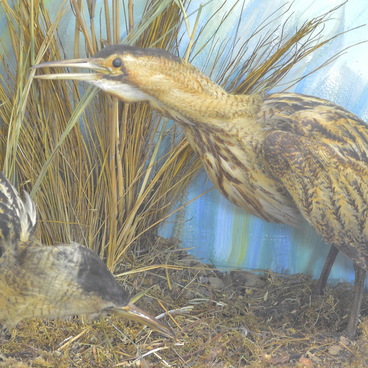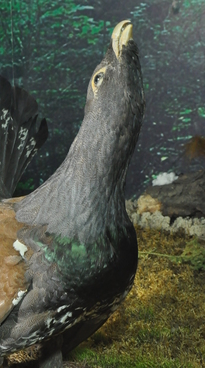Great cormorant is a big, goose-sized water bird belonging to the order of Pelecaniformes. Its Latin name is Phalacrocorax carbo. It has webbed feet, a long neck, a curved beak and a large black tuft. This bird’s color is black with a greenish tint. Its throat and cheeks are white, and it has yellow spots on the sides of the beak that go beyond the corners of the mouth. Sometimes, adult birds have gray head and neck, and younger individuals are gray-brown with a white belly. Newborn cormorant chicks are naked. The skin is painted black with a pinkish tint on the head. Birds put on the final outfit in the fourth year of life.
Cormorants nest in colonies, along the coasts of the seas, large rivers and lakes. In the Trans-Ural region, well-known colonies are located on reed creases, often near pelican and gull communities. When resting, cormorants gather in small flocks on the shore and sit in rows on the ground, on rocks, or in groups on tree tops. They take a peculiar pose common only to them: they sit for a long time with their wings spread and dry them in the sun. In this pose, the birds resemble heraldic eagles.
Cormorants feed almost exclusively on fish; they catch it diving into the water. Cormorants often hunt fish together with pelicans. Representatives of this species are great swimmers and divers, but in everything else they can be called awkward. Cormorants are able to dive to a depth of four meters and stay under water for up to 40 seconds. Great cormorant takes off heavily and noisily. It rises from the water with difficulty, after a long, up to 100 meters, run, actively working with its wings and legs. It also takes off from the ground with a take-off run or using some kind of elevation. Cormorants’ flight is heavy; they flap their wings fairly frequent and practically can’t soar.
Cormorant is a rather silent bird, but at nests, especially during feeding, they are usually noisy and clamorous. When a whole colony of birds is screaming, their voices merge into one continuous grunt.
In breeding and non-breeding times, they keep together in packs. On the ground they move slowly, rolling around, holding the body almost vertically, like penguins. Cormorants move more easily in the branches of trees, although often opening their wings for balance. They are very careful and in sight of approaching danger they usually try to fly away.

